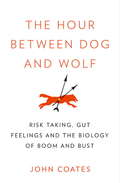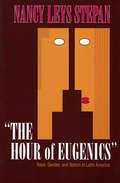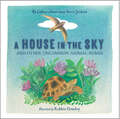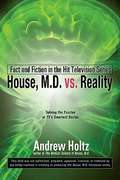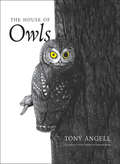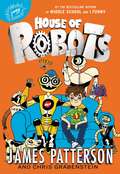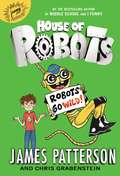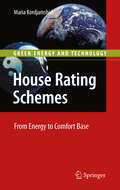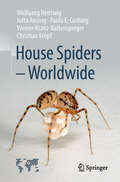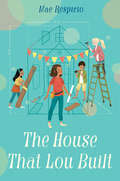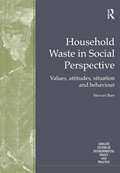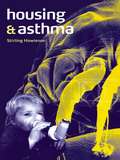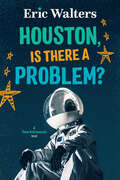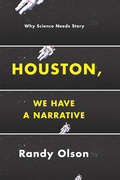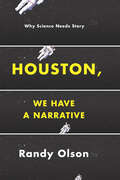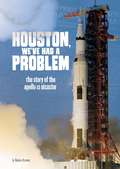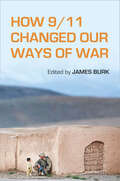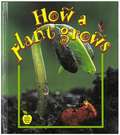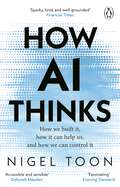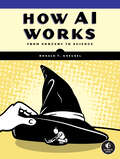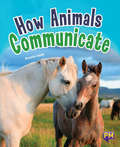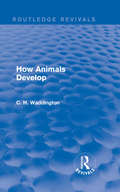- Table View
- List View
The Hour Between Dog and Wolf
by John CoatesA successful Wall Street trader turned Cambridge neuroscientist reveals the biology of financial boom and bust, showing how risk-taking transforms our body chemistry, driving us to extremes of euphoria or stressed-out depression. The laws of financial boom and bust, it turns out, have a lot to do with male hormones. In a series of startling experiments, Canadian scientist Dr. John Coates identified a feedback loop between testosterone and success that dramatically lowers the fear of risk in men, especially young men; he has vividly dubbed the moment when traders transform into exuberant high flyers "the hour between dog and wolf." Similarly, intense failure leads to a rise in levels of cortisol, which dramatically lowers the appetite for risk. His book expands on his seminal research to offer lessons from the exploding new field studying the biology of risk. Coates's conclusions shed light on all types of high-pressure decision-making, from the sports field to the battlefield, and leaves us with a powerful recognition: to handle risk isn't a matter of mind over body, it's a matter of mind and body working together. We all have it in us to be transformed from dog to wolf; the only question is whether we can understand the causes and the consequences.
"The Hour of Eugenics": Race, Gender, and Nation in Latin America
by Nancy Leys StepanEugenics was a term coined in 1883 to name the scientific and social theory which advocated "race improvement" through selective human breeding. In Europe and the United States the eugenics movement found many supporters before it was finally discredited by its association with the racist ideology of Nazi Germany. Examining for the first time how eugenics was taken up by scientists and social reformers in Latin America, Nancy Leys Stepan compares the eugenics movements in Mexico, Brazil, and Argentina with the more familiar cases of Britain, the United States, and Germany. In this highly original account, Stepan sheds new light on the role of science in reformulating issues of race, gender, reproduction, and public health in an era when the focus on national identity was particularly intense. Drawing upon a rich body of evidence concerning the technical publications and professional meetings of Latin American eugenicists, she examines how they adapted eugenic principles to local contexts between the world wars. Stepan shows that Latin American eugenicists diverged considerably from their counterparts in Europe and the United States in their ideological approach and their interpretations of key texts concerning heredity.
A House in the Sky
by Steve JenkinsCaldecott Honor recipient Steve Jenkins shines as the author of this amusing and thorough introduction to animal homes.Turtles, birds, fish, beavers, and kangaroos are just like people--they need homes, and take up residence in unusual places. A simple main text introduces similarities between human and animal homes while sidebars detail the unique qualities of each animal and its home. Stylized yet realistic watercolor illustrations prove that nonfiction can be accurate and elegant, and readers of all ages will appreciate this layered narrative.
House M.D. vs. Reality
by Andrew HoltzSolve the puzzles of TV's smartest doctor. Brilliant diagnostician Gregory House solves puzzles every day-using not just his vast medical knowledge but his razor-sharp instincts about human behavior. This new volume explores some of the questions raised by the hit TV drama-and does the detective work to get the answers. For any fascinated fan, it's a compelling journey into the real-world medicine behind the captivating cases of Dr. House.
The House of Owls
by Tony Angell&“A charming personal account, accompanied by nearly 100 illustrations, that underscores how owls and other birds enrich our lives.&”—Kirkus Reviews Winner of the National Outdoor Book Award For a quarter of a century, Tony Angell and his family shared the remarkable experience of closely observing pairs of western screech owls that occupied a nesting box outside the window of their forest home. The journals in which the author recorded his observations, and the captivating drawings he created, form the heart of this compelling book—a personal account of an artist-naturalist&’s life with owls. Angell&’s extensive illustrations show owls engaged in what owls do—hunting, courting, raising families, and exercising their inquisitive natures—and reveal his immeasurable respect for their secret lives and daunting challenges. Angell discusses the unique characteristics that distinguish owls from other bird species and provides a fascinating overview of the impact owls have had on human culture and thought. He also offers detailed scientific descriptions of the nineteen species of owls found in North America, as well as their close relatives elsewhere. Always emphasizing the interaction of humans and owls, the author affirms the power of these birds to both beguile and inspire. &“Endearing…provides a lot of fascinating information about these reclusive creatures.&”—The New York Times Book Review &“Angell writes (and draws) with the absolute authority of one who has studied, rehabilitated, lived with and loved the animals his whole life.&”—The Wall Street Journal &“Steeped in the tradition of Alexander Wilson and John James Audubon, it blends taxonomy, ornithology, biogeography and autobiography.&”—Times Literary Supplement
House of Robots (House of Robots #1)
by James Patterson Chris GrabensteinIn this highly-illustrated series from James Patterson, an extraordinary robot signs up for an ordinary fifth grade class . . . and elementary school will never be the same!It was never easy for Sammy Hayes-Rodriguez to fit in, so he's dreading the day when his genius mom insists he bring her newest invention to school: a walking, talking robot he calls E-for "Error". Sammy's no stranger to robots; his house is full of a colorful cast of them. But this one not only thinks it's Sammy's brother . . . it's actually even nerdier than Sammy. Will E be Sammy's one-way ticket to Loserville? Or will he prove to the world that it's cool to be square? It's a roller-coaster ride for Sammy to discover the amazing secret E holds that could change family forever . . . if all goes well on the trial run!
House of Robots: Robots Go Wild! (House of Robots #2)
by James Patterson Chris GrabensteinIn book two of the House of Robots series, it's 'bot brains versus 'bot brawn in an all-out war!Sammy Hayes-Rodriguez and his "bro-bot" E are making new friends every day as E works as his bedridden sister Maddie's school proxy. But disaster strikes when E malfunctions just in time to be upstaged by the super-cool new robot on the block-and loses his ability to help Maddie. Now it's up to Sammy to figure out what's wrong with E and save his family!
House Rating Schemes
by Maria Kordjamshidi"House Rating Schemes" provides information to students, architects and researchers in the field of the built environment. It reviews current House Rating Schemes (HRS) used in different countries and investigates how these schemes assess the thermal performance of a house. It challenges the way that these schemes assess building energy efficiency and their inability to evaluate free running buildings which do not need an energy load for heating and cooling indoor environments. Finally, the book proposes a new index and method for HRS in which the efficiency of a house design can be evaluated with reference to its thermal performance in both free running and conditioned operation modes. The book deals with various approaches and methods for rating buildings on the basis of different indexes, with implications for both energy efficiency and thermal comfort. It also guides readers through a computer simulation program for developing a rating system that evaluates and ranks building energy efficiency.
House Spiders - Worldwide
by Wolfgang Nentwig Jutta Ansorg Paula E. Cushing Yvonne Kranz-Baltensperger Christian KropfTo avoid any misunderstandings: this book is not about spiders as pets, but about those spiders that live in our houses and apartments as lodgers. Mostly ignored and sometimes (wrongly) feared, there is hardly a building in the world that does not harbour some species of spider. What is fascinating is that we always find the same species. These spiders must have special adaptations, because the humidity in our homes is far too low, they are too clean, and the food supply is usually scarce. However, those spiders that have made the leap into our four walls are rewarded with a worldwide right to stay. This, in turn, is due to people's eagerness to trade and migrate worldwide: Humans tirelessly transport their belongings and an endless stream of goods around the world in sacks, parcels and containers. And our domestic spiders, as stowaways, travel just as tirelessly and unrecognized. It is therefore possible to present domestic spiders found throughout the world in a single book, as they are essentially the same everywhere. The 50 or so most important species and species groups are presented here in a generally understandable way, with a detailed profile, photos and distribution maps. The authors of this book are experts who work at museums, universities and in administration in Europe and North America. They are not only recognized scientists, but have also been avowed spider fans for decades.
The House That Lou Built
by Mae RespicioA coming-of-age story that explores culture and family, forgiveness and friendship, and what makes a true home. Perfect for fans of Wendy Mass and Joan Bauer. <P><P>Lou Bulosan-Nelson has the ultimate summer DIY project. She's going to build her own "tiny house," 100 square feet all her own. She shares a room with her mom in her grandmother's house, and longs for a place where she can escape her crazy but lovable extended Filipino family. <P><P>Lou enjoys her woodshop class and creating projects, and she plans to build the house on land she inherited from her dad, who died before she was born. <P><P>But then she finds out that the land may not be hers for much longer. Lou discovers it's not easy to save her land, or to build a house. But she won't give up; with the help of friends and relatives, her dream begins to take shape, and she learns the deeper meaning of home and family.
Household Energy and the Poor in the Third World (Routledge Revivals)
by Joy Dunkerley Elizabeth Cecelski William RamsayThis volume originated as a report given to the World Bank in 1978 on the household energy consumption of both the urban and rural poor in developing countries. Originally published in 1979, this title supplies alternatives for meeting the domestic energy needs of the poor in developing countries and looks at the results of experiments in introducing new forms of energy. This book is a valuable resource for public policy makers and students interested in environmental studies and developmental studies.
Household Waste in Social Perspective: Values, Attitudes, Situation and Behaviour (Routledge Studies in Environmental Policy and Practice)
by Stewart BarrThe principal barrier to the introduction of more sustainable disposal methods has previously been thought to be the lack of both available knowledge and an awareness of the benefits and ease of these systems. Illustrated by an in-depth analysis of waste reduction, reuse and recycling behaviour in Exeter, Devon, this volume questions these assumptions. It not only provides a fresh examination of the previous (mainly US-focused) research into the underlying determinants of waste management behaviour from a geographical perspective, but also develops a new theoretical model based on the Theory of Reasoned Action. Linking three broad categories: environmental values, situational characteristics and psychological factors, the book provides a timely evaluation of research on household waste management, develops an original analytical model and demonstrates the utility and importance of focusing on individual attitudes.
Housing and Asthma
by Stirling HowiesonAsthma is on the rise in a number of countries, in this volume Howieson asks what role the built environment has to play and what the construction industry can do to either slow the increase or reverse the trend. Based on the findings of a six-year research project, this book considers all aspects of housing to develop new strategies for dealing with the asthma pandemic in Britain and beyond. With the focus on the design and use pattern of our dwellings, the book looks at tackling the problems inherent in existing housing as well as forging guiding principles for the design of new dwellings, together with a financial assessment of the proposals.
Houston, Is There A Problem?: Teen Astronauts #1 (Teen Astronauts #1)
by Eric WaltersKey Selling Points A young teen earns a scholarship to go to space camp. The first in the Teen Astronauts series featuring Houston at space camp. Examines themes of perseverance, leadership and growth mindset. This is an adventure story with an exciting setting: astronaut training camp. Eric Walters is very well known to librarians and booksellers.
Houston, We Have a Narrative: Why Science Needs Story
by Randy OlsonAsk a scientist about Hollywood, and you'll probably get eye rolls. But ask someone in Hollywood about science, and they'll see dollar signs: moviemakers know that science can be the source of great stories, with all the drama and action that blockbusters require. That's a huge mistake, says Randy Olson: Hollywood has a lot to teach scientists about how to tell a story--and, ultimately, how to do science better. With Houston, We Have a Narrative, he lays out a stunningly simple method for turning the dull into the dramatic. Drawing on his unique background, which saw him leave his job as a working scientist to launch a career as a filmmaker, Olson first diagnoses the problem: When scientists tell us about their work, they pile one moment and one detail atop another moment and another detail--a stultifying procession of "and, and, and. " What we need instead is an understanding of the basic elements of story, the narrative structures that our brains are all but hardwired to look for--which Olson boils down, brilliantly, to "And, But, Therefore," or ABT. At a stroke, the ABT approach introduces momentum ("And"), conflict ("But"), and resolution ("Therefore")--the fundamental building blocks of story. As Olson has shown by leading countless workshops worldwide, when scientists' eyes are opened to ABT, the effect is staggering: suddenly, they're not just talking about their work--they're telling stories about it. And audiences are captivated. Written with an uncommon verve and enthusiasm, and built on principles that are applicable to fields far beyond science, Houston, We Have a Narrative has the power to transform the way science is understood and appreciated, and ultimately how it's done.
Houston, We Have a Narrative: Why Science Needs Story
by Randy OlsonAsk a scientist about Hollywood, and you’ll probably get eye rolls. But ask someone in Hollywood about science, and they’ll see dollar signs: moviemakers know that science can be the source of great stories, with all the drama and action that blockbusters require. That’s a huge mistake, says Randy Olson: Hollywood has a lot to teach scientists about how to tell a story—and, ultimately, how to do science better. With Houston, We Have a Narrative, he lays out a stunningly simple method for turning the dull into the dramatic. Drawing on his unique background, which saw him leave his job as a working scientist to launch a career as a filmmaker, Olson first diagnoses the problem: When scientists tell us about their work, they pile one moment and one detail atop another moment and another detail—a stultifying procession of “and, and, and.” What we need instead is an understanding of the basic elements of story, the narrative structures that our brains are all but hardwired to look for—which Olson boils down, brilliantly, to “And, But, Therefore,” or ABT. At a stroke, the ABT approach introduces momentum (“And”), conflict (“But”), and resolution (“Therefore”)—the fundamental building blocks of story. As Olson has shown by leading countless workshops worldwide, when scientists’ eyes are opened to ABT, the effect is staggering: suddenly, they’re not just talking about their work—they’re telling stories about it. And audiences are captivated. Written with an uncommon verve and enthusiasm, and built on principles that are applicable to fields far beyond science, Houston, We Have a Narrative has the power to transform the way science is understood and appreciated, and ultimately how it’s done.
Houston, We've Had a Problem: The Story of the Apollo 13 Disaster (Tangled History)
by Rebecca RissmanIn an immersive, exciting narrative nonfiction format, this powerful book follows a selection of people who experienced the events surrounding the Apollo 13 disaster.
How 9/11 Changed Our Ways of War
by James BurkFollowing the 9/11 attacks, a war against al Qaeda by the U. S. and its liberal democratic allies was next to inevitable. But what kind of war would it be, how would it be fought, for how long, and what would it cost in lives and money? None of this was known at the time. What came to be known was that the old ways of war must changeOCobut how? Now, with over a decade of political decision-making and warfighting to analyze, "How 9/11 Changed Our Ways of War" addresses that question. In particular it assesses how well those ways of war, adapted to fight terrorism, affect our military capacity to protect "and" sustain liberal democratic values. The book pursues three themes: what shaped the strategic choice to go to war; what force was used to wage the war; and what resources were needed to carry on the fight? In each case, military effectiveness required new and strict limits on the justification, use, and support of force. How to identify and observe these limits is a matter debated by the various contributors. Their debate raises questions about waging future warsOCoincluding how to defend against and control the use of drones, cyber warfare, and targeted assassinations. The contributors include historians, political scientists, and sociologists; both academics and practitioners. "
How a plant grows (Crabapples)
by Bobbie KalmanHow A Plant Grows introduces children to the amazing lives of plants--from their beginnings, through their growth, to reproduction and death. Full-color illustrations and photographs accompany simple plant experiments.
How AI Thinks: How we built it, how it can help us, and how we can control it
by Nigel ToonTHE #2 TIMES BESTSELLER'Artificial intelligence is going to have a massive impact on everyone’s lives... an accessible and sensible read that helps demystify AI' Deborah Meaden, entrepreneur and star of Dragon's Den'Nigel Toon is a visionary leader in the field of artificial intelligence... a must-read' Marc Tremblay, Distinguished Engineer, MicrosoftThose who understand how AI thinks are about to win big.We are used to thinking of computers as being a step up from calculators - very good at storing information, and maybe even at playing a logical game like chess. But up to now they haven't been able to think in ways that are intuitive, or respond to questions as a human might. All that has changed, dramatically, in the past few years.Our search engines are becoming answer engines. Artificial intelligence is already revolutionising sectors from education to healthcare to the creative arts. But how does an AI understand sentiment or context? How does it play and win games that have an almost infinite number of moves? And how can we work with AI to produce insights and innovations that are beyond human capacity, from writing code in an instant to unfolding the elaborate 3D puzzles of proteins?We stand at the brink of a historic change that will disrupt society and at the same time create enormous opportunities for those who understand how AI thinks. Nigel Toon shows how we train AI to train itself, so that it can paint images that have never existed before or converse in any language. In doing so he reveals the strange and fascinating ways that humans think, too, as we learn how to live in a world shared by machine intelligences of our own creation.
How AI Works: From Sorcery to Science
by Ronald T. KneuselAI isn&’t magic. How AI Works demystifies the explosion of artificial intelligence by explaining—without a single mathematical equation—what happened, when it happened, why it happened, how it happened, and what AI is actually doing "under the hood."Artificial intelligence is everywhere—from self-driving cars, to image generation from text, to the unexpected power of language systems like ChatGPT—yet few people seem to know how it all really works. How AI Works unravels the mysteries of artificial intelligence, without the complex math and unnecessary jargon.You&’ll learn: The relationship between artificial intelligence, machine learning, and deep learningThe history behind AI and why the artificial intelligence revolution is happening nowHow decades of work in symbolic AI failed and opened the door for the emergence of neural networksWhat neural networks are, how they are trained, and why all the wonder of modern AI boils down to a simple, repeated unit that knows how to multiply input numbers to produce an output number.The implications of large language models, like ChatGPT and Bard, on our society—nothing will be the same againAI isn&’t magic. If you&’ve ever wondered how it works, what it can do, or why there&’s so much hype, How AI Works will teach you everything you want to know.
How Animal Babies Stay Safe (Let's-Read-and-Find-Out Science 1)
by Mary Ann FraserRead and find out about how animal parents keep their babies safe from predators in this colorfully illustrated nonfiction picture book.This is a clear and appealing science book for early elementary age kids, both at home and in the classroom. It looks at the many strategies animal babies use to survive in a dangerous world. Some babies hide in nests or dens, some ride on thier parents' back or in their pouches, some use camouflage, and some rely on their parents' sharp claws and teeth to fend off enemies. Whether showing "a mother monkey swinging through the jungle with her baby on her back or two baby raccoons peeking out of their tree-house home while their mother lures a bobcat away from her young," wrote Kirkus, this book captures the eternal appeal of baby animals.It's a Level 1 Let's-Read-and-Find-Out, which means the book explores introductory concepts perfect for children in the primary grades. The 100+ titles in this leading nonfiction series are:hands-on and visualacclaimed and trustedgreat for classroomsTop 10 reasons to love LRFOs:Entertain and educate at the same timeHave appealing, child-centered topicsDevelopmentally appropriate for emerging readersFocused; answering questions instead of using survey approachEmploy engaging picture book quality illustrationsUse simple charts and graphics to improve visual literacy skillsFeature hands-on activities to engage young scientistsMeet national science education standardsWritten/illustrated by award-winning authors/illustrators & vetted by an expert in the fieldOver 130 titles in print, meeting a wide range of kids' scientific interestsBooks in this series support the Common Core Learning Standards, Next Generation Science Standards, and the Science, Technology, Engineering, and Math (STEM) standards. Let's-Read-and-Find-Out is the winner of the American Association for the Advancement of Science/Subaru Science Books & Films Prize for Outstanding Science Series.
How Animals Communicate (Into Reading, Level T #53)
by Annette SmithNIMAC-sourced textbook <p><p> Did you know that, like people, animals communicate with each other? When animals send and receive messages using smell, sight, sound, and touch, they're not just saying 'hi'—communication is vital to their survival!
How Animals Develop: A Short Account Of The Science Of Embryology - Primary Source Edition (Routledge Revivals: Selected Works of C. H. Waddington)
by C. H. WaddingtonFirst published in 1935 (this edition in 1946), this short account of the science of embryology was the first book in English to provide a simple outline of the whole of this important subject. The study of development is perhaps the best method of approach to the most fundamental of all biological problems, the problem of how all the diverse activities are integrated so as to make up a complete individual organism. The book gives a short sketch of the general pattern on which all animals are built, but devotes more attention to the factors which cause the development of the elements in the pattern, and which then bring them into correct relations with one another. This volume is simply written in order to enable the general reader to understand the revolutionary advances made in the subject at that time.
